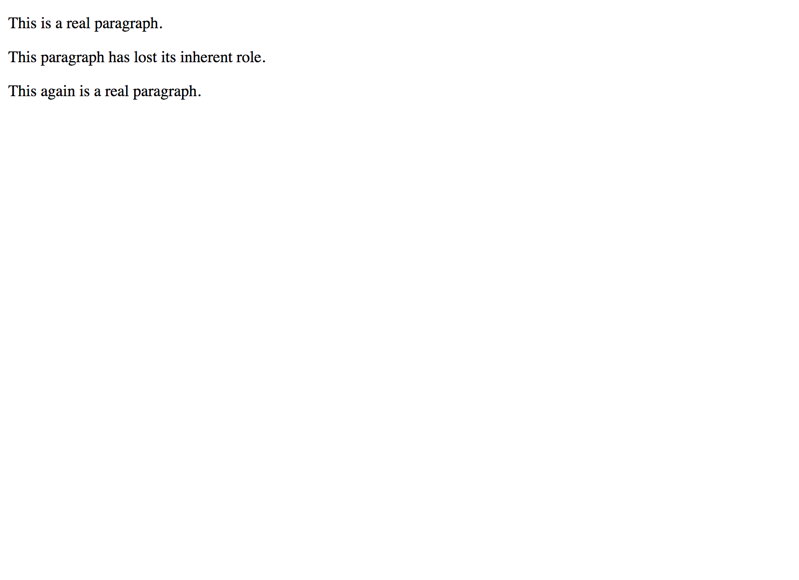Removing semantics using presentation role
ARIA provides a role which removes the inherent semantics of an element. While this works in most browsers and screen readers, it is rarely needed.
Background
As we know from Semantics and their importance for accessibility, HTML elements all have their inherent role. If for some reason you need to remove this role from an element, you can do this by setting role="presentation" (it should be treated like a <div> then).
Notice: we know that role="presentation" does not work in Internet Explorer. Still we want to talk about it here, as it you may stumble over it during your work as a developer, and it is good for you to know about it.
Intended use
To a screen reader, the following is no paragraph anymore, and as such cannot be navigated to by pressing the P key:
<p role="presentation">
Hello folks!
</p>
Removing semantics using presentation role
Peculiarities
Using role="presentation", only the role of an element's is removed. Any other inherent feature will remain untouched.
For example, a link with role="presentation" neither will be announced as "link" by NVDA nor will it be listed in NVDA's "Elements list" window (NVDA + F7). But it will remain being focusable like any other link, and clicking it will still open its target location.
Real world use (and conclusion)
There are only very few edge cases where removing semantics makes sense, usually when fiddling around with ARIA widgets (see The purpose behind the WAI-ARIA standard).
In general, when sticking to this guide's recommendations (especially that widgets should be created using traditional HTML controls, see Widgets simply working for all), you will not need role="presentation" at all.
